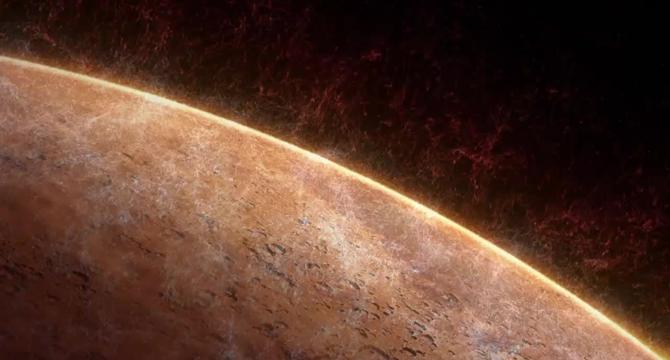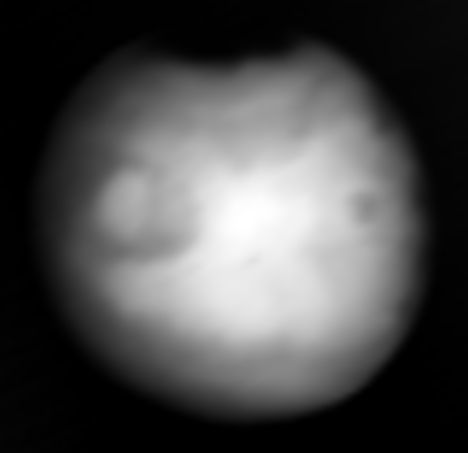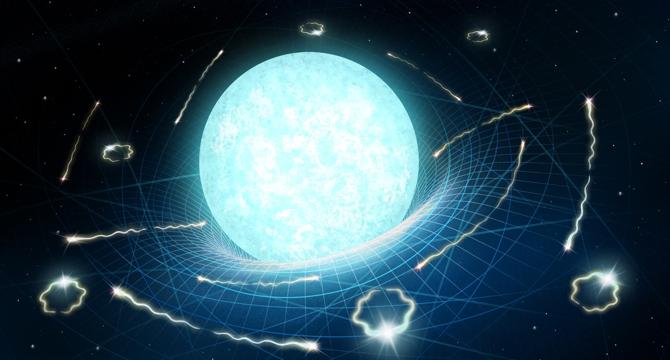Space News
Spaceflightnow
86

Live coverage: SpaceX to launch 26 Starlink satellites on Falcon 9 rocket from Vandenberg SFB
- SpaceX is set to launch 26 Starlink satellites on Falcon 9 rocket from Vandenberg Space Force Base as part of the Starlink 15-4 mission.
- The liftoff of the Falcon 9 rocket is scheduled for 6:15 p.m. PDT (9:15 p.m. EDT, 0115 UTC) from Space Launch Complex 4 East.
- SpaceX will use the Falcon 9 first stage booster 1088 for this mission, marking its sixth flight, and the booster is expected to land on the droneship 'Of Course I Still Love You.'
- This launch will be SpaceX's 18th launch of the year from California, with the company having the ability to launch up to 50 times annually from pad 4 East as per permissions granted by the FAA and the Department of the Air Force.
Read Full Article
5 Likes
Livescience
303

Image Credit: Livescience
Scientists find hint of hidden liquid water ocean deep below Mars' surface
- A layer of liquid water may be present in Martian rocks between 3.4 and 5 miles below the surface, according to seismic evidence.
- This hidden water volume on Mars could potentially create an ocean 1,700 to 2,560 feet deep, similar to Antarctica's ice sheet.
- Mars was once rich in water but transitioned to a cold, dry environment over time, losing its magnetic field and atmosphere.
- Previous water loss methods do not fully explain Mars' past water flow, leading to the hypothesis of hidden liquid water.
- Seismic data from NASA's InSight lander suggests a 'low-velocity layer' deep within Mars may be porous rock filled with liquid water.
- This discovery implies that significant amounts of ancient water on Mars might have percolated through underground rocks, matching 'missing water' estimates.
- Other studies have suggested large water volumes stored in ice beneath Mars' surface, with potential liquid water trapped within rocks deeper underground.
- Confirming the presence of liquid water on Mars requires future missions with seismometers and drills to explore these deep regions.
- The potential existence of liquid water on Mars raises excitement among scientists due to its essential role in life, sparking interest in further exploration.
Read Full Article
18 Likes
Nasa
82

Image Credit: Nasa
NASA’s Europa Clipper Captures Mars in Infrared
- NASA's Europa Clipper spacecraft captured infrared images of Mars during a recent flyby for calibration purposes.
- The data collected will help in calibrating the thermal imaging instrument for Europa Clipper's mission to Jupiter's moon Europa.
- Europa Clipper aims to investigate the global ocean hidden under Europa's icy surface for conditions suitable for life.
- The spacecraft will conduct close flybys to map temperatures on Europa's surface using thermal imaging technology.
- By analyzing thermal data, scientists can identify active areas on Europa's surface and locate regions where the ocean is closest to the surface.
- The spacecraft also tested its radar instrument during the Mars flyby, ensuring all components worked well together.
- Scientists compared Europa Clipper's infrared images of Mars with existing data to validate the instrument's calibration.
- Europa Clipper's mission objectives include determining Europa's icy shell thickness, composition, and geology to understand its potential for hosting life.
- The spacecraft, launched in 2024, will utilize gravity assists from Mars and Earth to reach Jupiter by 2030.
- Managed by NASA's Jet Propulsion Laboratory, Europa Clipper's mission aims to explore habitable worlds beyond Earth.
Read Full Article
4 Likes
TechDigest
221

Image Credit: TechDigest
ScotRail to partner with Elon Musk’s Starlink for passenger WiFi
- ScotRail partners with Elon Musk's Starlink for trials of passenger WiFi on its trains.
- Six trains in the north of Scotland equipped with technology to connect with Starlink's satellite network.
- Successful trial may lead to expansion on services in south of Scotland and influence future train purchases.
- Partnership with Clarus Networks to address connectivity challenges in the region, enhancing passenger experience.
Read Full Article
13 Likes
Discover more
Popsci
303

Image Credit: Popsci
The universe may die sooner than expected
- Astrophysicists' current models suggest the universe could end in around 10¹¹⁰⁰ years, but new calculations indicate it could end much sooner due to the nature of black hole particles.
- A study published in the Journal of Cosmology and Astroparticle Physics suggests that stellar remnants due to decay could take only 10⁷⁸ years before the universe's demise, attributed to Hawking radiation.
- Hawking radiation, theorized by Stephen Hawking, introduces a scenario where particles can escape black holes, causing a slow decay of the universe over time.
- The revised calculation considering Hawking radiation puts the demise of the universe at 10⁷⁸ years, affecting objects like white dwarfs, neutron stars, and black holes.
Read Full Article
18 Likes
Nasa
308

Image Credit: Nasa
NASA Ames Stars of the Month: May 2025
- NASA Ames Science Directorate recognizes the outstanding contributions of Dennis Leveson-Gower and Laura Iraci.
- Dennis Leveson-Gower, Assistant Branch Chief of Bioengineering, is recognized for his exceptional leadership and collaborative skills within the Space Biosciences Division.
- Laura Iraci, a Senior Research Scientist in the Atmospheric Science Branch, is acknowledged for her scientific leadership and mentoring efforts in the development of atmospheric instrumentation for NASA missions.
- Both Leveson-Gower and Iraci exemplify the entrepreneurial spirit and technical expertise essential for NASA's exploration endeavors.
Read Full Article
18 Likes
Nasa
52

Image Credit: Nasa
5 Tips to Craft a Standout NASA Internship Application
- NASA internship provides an opportunity to launch a future with the aerospace workforce with meaningful work and projects.
- Tips to stand out in a NASA internship application include crafting a powerful personal statement, showcasing academic achievements, detailing extracurricular activities, highlighting valuable skills, and not underestimating your chances.
- Mentors pay attention to personal statements that demonstrate fit with the project and team culture.
- Academic expertise, extracurricular activities, and a diverse skill set enhance the chances of being selected for a NASA internship.
Read Full Article
3 Likes
Knowridge
230

Image Credit: Knowridge
Venus’s surprisingly thin crust might hold clues to its fiery past
- New research indicates that Venus's crust is surprisingly thin compared to previous assumptions, with an average thickness of about 25 miles and at most 40 miles.
- Unlike Earth, Venus does not have plate tectonics, but its crust is still evolving through processes like crust breaking off or melting, contributing to volcanic activity.
- This discovery reshapes scientists' understanding of Venus's geology, atmosphere, and volcanic activity, highlighting the planet's unique way of recycling its crust.
- Upcoming missions such as NASA's DAVINCI and VERITAS, along with the European Space Agency's EnVision mission, aim to gather more data about Venus's surface to confirm geological processes and understand volcanic activity better.
Read Full Article
13 Likes
Brighter Side of News
317

Image Credit: Brighter Side of News
Schrödinger’s cat theory may prove that parallel universes actually exist
- The many-worlds interpretation presents a scenario where infinite realities coexist, each branching off from quantum events in the universe.
- This concept differs from other multiverse theories by suggesting that alternate realities exist in the same space and time.
- The challenge arises from understanding why we only experience one reality out of the many theoretically possible outcomes in quantum events.
- Scientists from Autonomous University of Barcelona are investigating how classical features might emerge from a purely quantum system.
- Their simulations indicate that as particles become more entangled and interact, quantum effects diminish, leading to a single dominant reality.
- Their research sheds light on the transition from quantum to classical behavior without relying on external factors.
- Decoherence, the process through which quantum superpositions lose coherence due to interactions, plays a key role in understanding this transition.
- The work emphasizes the impact of slow, coarse observables in anchoring a system to a classical trajectory.
- The researchers' findings challenge the notion that specific conditions are necessary for classicality to emerge in large quantum systems.
- While the many-worlds interpretation offers insights into the nature of reality, it also faces challenges in incorporating the complexities of general relativity and macroscopic quantum effects.
Read Full Article
19 Likes
Hackaday
300

Image Credit: Hackaday
Open Source ELINT Accidentally from NASA
- Nukes accidentally discovered strange happenings in the radio spectrum by analyzing public data from NASA's SMAP satellite, which is primarily used to measure soil moisture.
- The SMAP satellite operates at 1.41 GHz in the L-band, a frequency reserved for specialized purposes like radio astronomy, with low-power safety critical data systems to minimize interference.
- Detection of signals at 1.41 GHz, where high-power transmitters are not expected, can indicate unusual and interesting occurrences such as military jamming, providing insight into geopolitical activities.
- Accessing and analyzing this satellite data with a simple Python script highlights the transition of once highly secretive jamming technology into publicly available information, revealing unexpected uses of satellites.
Read Full Article
18 Likes
Spaceflightnow
104

Live coverage: 28 Starlink satellites to launch on Falcon 9 booster making record breaking 28th flight
- SpaceX is preparing to launch a Falcon 9 booster for its 28th flight, aiming to deliver 28 Starlink satellites into orbit.
- The liftoff is scheduled from Launch Complex 39A at NASA’s Kennedy Space Center, marking the 100th launch of a single-stick Falcon 9 rocket from this pad.
- Weather forecast suggests a 50 percent chance of favorable conditions, with concerns about cloud cover due to expected storms.
- After liftoff, SpaceX plans to land the booster on its drone ship in the Atlantic Ocean, which would mark the 120th successful landing for the drone ship.
Read Full Article
6 Likes
The Verge
153

Image Credit: The Verge
United’s Starlink-powered Wi-Fi is the end of airplane mode
- United Airlines is equipping its planes with Starlink's satellite Wi-Fi, offering fast and reliable connectivity.
- The test plane was an Embraer E-175 with United executives serving first-class snacks and Champagne to passengers.
- United is no longer asking passengers to switch phones to airplane mode, encouraging browsing, streaming, and gaming inflight.
- United is the first of the big three domestic airlines to partner with SpaceX's Starlink for in-flight Wi-Fi.
Read Full Article
9 Likes
Earthsky
104

Image Credit: Earthsky
Nearby star’s music sparks a surprising discovery
- Astronomers used the Keck Observatory in Hawaii to listen to the "music" of the nearby star HD 219134, discovering it is slightly smaller than previously thought and providing insights into stars' rotation and planets' characteristics.
- By studying the subtle vibrations or oscillations emitted by stars, astronomers can determine their mass, size, and age, as well as measure the sizes and densities of planets orbiting them.
- The technique of listening to stars' sound waves, known as asteroseismology, allows scientists to gain valuable information about stars' interiors and evolutionary processes.
- The Keck Planet Finder instrument at the W. M. Keck Observatory was crucial in detecting the stellar vibrations of the cooler orange star HD 219134, aiding in precise measurements and discoveries.
- Studying the oscillations within stars like HD 219134 helps determine their ages, rotational speeds, and how they evolve over billions of years, contributing to a better understanding of stellar lifetimes.
- The new study on HD 219134 revealed it to be more than twice the age of our sun, emphasizing the importance of asteroseismic data in calibrating stellar models and accurately estimating star ages.
- Surprisingly, HD 219134 was found to be about 4% smaller than previously believed, challenging existing stellar models and raising questions about the causes of this size difference.
- With at least five confirmed planets, including super-Earths, orbiting HD 219134, the refined measurements of the star's size will aid in better understanding the planets' properties and potential for extraterrestrial life.
- Further research using instruments like the Keck Planet Finder can help in the quest to identify planets with potential for hosting life and determine the ages of stars and their associated planetary systems more accurately.
- Studying the music of nearby stars through asteroseismology offers valuable insights into stellar evolution, planetary characteristics, and the potential for discovering life beyond Earth.
Read Full Article
6 Likes
Earthsky
0

Image Credit: Earthsky
Supermassive black hole roaming the darkness between stars
- Scientists have identified a supermassive black hole wandering between stars for the first time, instead of at a galaxy's core.
- This black hole, about 1 million times the mass of the sun, was discovered when it consumed a nearby star, emitting a burst of energy.
- Named AT2024tvd, the black hole was found through a tidal disruption event from 600 million light-years away.
- This discovery challenges previous beliefs about black hole locations and may lead to finding more wandering black holes in the future.
- A galaxy containing this wandering black hole also has a larger one at its core, 2,600 light-years away, with 100 million times the sun's mass.
- Observations with the Zwicky Transient Facility in California confirmed the bright flare as a supermassive black hole event.
- Possible origins of the wandering black hole include interactions with other black holes in the galaxy's core or being from a merged galaxy.
- Yuhan Yao of UC Berkeley led the study and believes this discovery will inspire further research on offset tidal disruption events.
- The detection of this unique supermassive black hole emphasizes the ongoing exploration and understanding of celestial phenomena.
- The findings provide valuable insights into the behavior and dynamics of black holes in varying galactic environments.
Read Full Article
Like
For uninterrupted reading, download the app